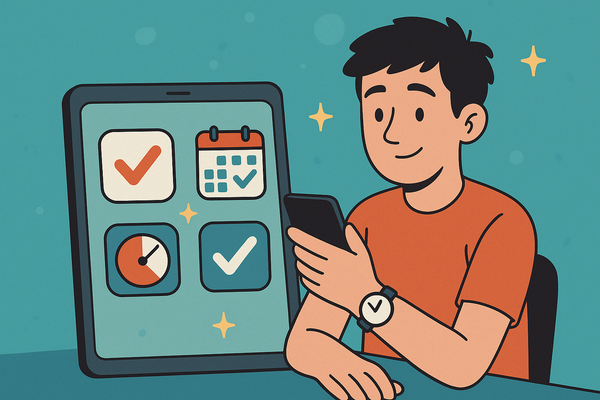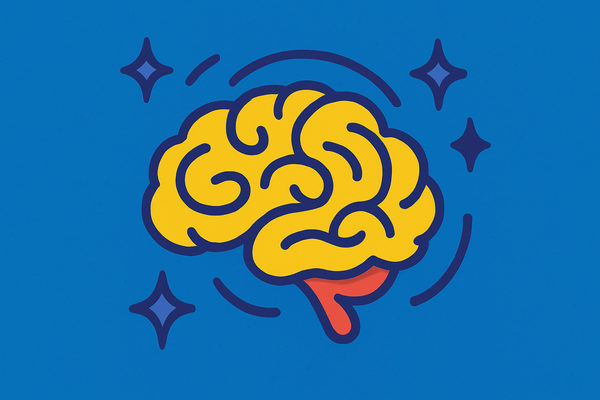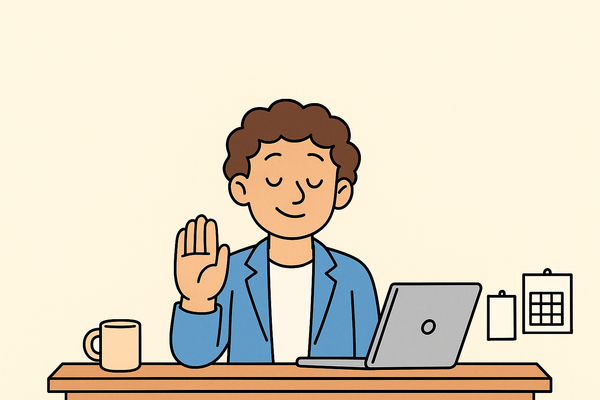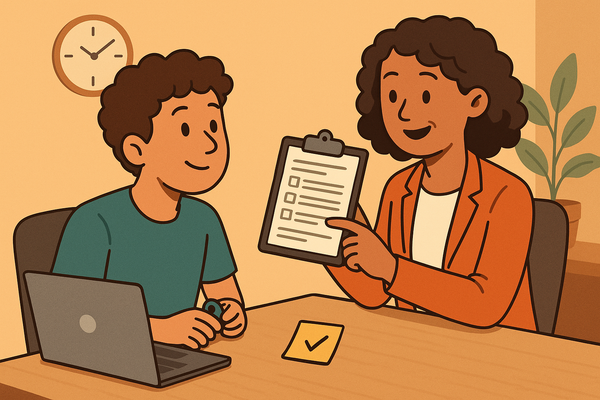Why Traditional Productivity Advice Fails ADHD Brains
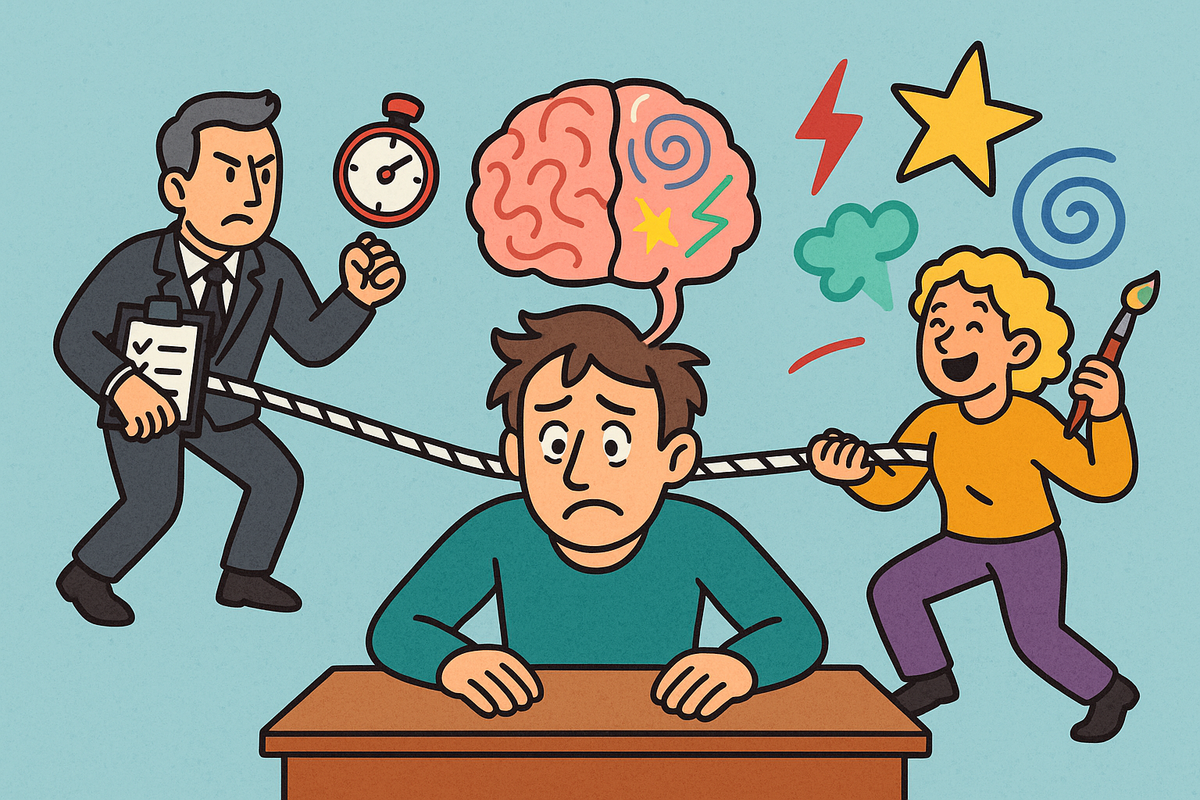
I’ve bought more productivity books than I care to admit. I’ve downloaded apps that promised to “revolutionize my workflow.” I’ve tried the Pomodoro Technique, Getting Things Done, time blocking, habit stacking, and about seventeen different bullet journal systems.
Each time, I’d start with the enthusiasm of someone who just discovered fire. This would be it. This would be the system that finally made sense of my scattered brain and turned me into one of those people who responds to emails promptly and never misses deadlines.
And each time, within about two weeks, I’d be back to my old chaos. Except now I also felt like a failure for not being able to stick with a system that “works for everyone.”
Here’s what took me years to understand: traditional productivity advice doesn’t fail because I lack willpower or discipline. It fails because it’s designed for brains that work fundamentally differently than mine.
The Problem with “One Size Fits All”
Most productivity systems are built on a few core assumptions that simply don’t hold true for ADHD brains:
Assumption #1: You have consistent energy and focus throughout the day.
Reality check: My brain has two modes — hyperfocus (where I forget to eat lunch and suddenly it’s 6 PM) and “buffering” (where I stare at my to-do list like it’s written in hieroglyphics).
Assumption #2: You can estimate how long tasks will take.
Reality check: I will either finish something in twenty minutes or it will somehow expand to consume my entire week. There is no middle ground.
Assumption #3: Breaking tasks into smaller pieces automatically makes them easier.
Reality check: Sometimes breaking tasks down just gives me more opportunities to get overwhelmed. Now instead of one big scary thing, I have seventeen small scary things.
Assumption #4: Consistency is key.
Reality check: My brain craves novelty. The system that worked last month might make me want to set my laptop on fire this month.
Why “Just Use a Planner” Doesn’t Work
Let’s talk about the classic advice: “You just need a good planner!”
I have used planners. Beautiful planners. Expensive planners. Digital planners. Analog planners. Planners with stickers and color-coding systems that would make a Pinterest board weep with joy.
And here’s what happens every single time:
Week 1: I fill out everything meticulously. Look at me, being a real adult with a real planning system!
Week 2: I mostly remember to check it. I’m only behind by a few days. This is fine.
Week 3: The planner is buried under a pile of papers, and I’ve been writing important reminders on my hand like a caveman.
Week 4: I find the planner while looking for something else and feel a wave of shame so intense I consider burning it.
The problem isn’t the planner. The problem is that traditional planning assumes your brain works in a linear, predictable way. ADHD brains are more like… creative chaos engines. We don’t think in neat little time blocks and sequential lists.
The Myth of “Morning Routines”
You know what every productivity guru swears by? Morning routines. Wake up at 5 AM, meditate, journal, exercise, drink your green smoothie, and tackle your Most Important Tasks before the world wakes up.
This advice makes me want to hide under my covers forever.
First of all, many ADHD brains are night owls. Our circadian rhythms are often delayed, meaning our peak focus time might be 10 PM, not 6 AM. Forcing yourself into an early morning routine can be like trying to run a marathon with your shoelaces tied together.
Second, the idea that you should do the “most important” work first assumes you have control over when your brain decides to cooperate. Some days, my brain wants to hyper-focus on organizing my email inbox. Other days, it wants to research the mating habits of octopi. Fighting this is exhausting and usually counterproductive.
Time Blocking: A Beautiful Theory
Time blocking looks so elegant on paper. Color-coded calendar blocks, each task assigned its perfect little rectangle of time. Every productivity influencer swears by it.
But here’s what actually happens when I try time blocking:
9:00-10:00 AM: Respond to emails
Actually happens: Spend 45 minutes responding to one email because it required “careful thought,” then get distracted by a fascinating article someone linked.
10:00-11:30 AM: Work on Project A
Actually happens: Stare at Project A for 20 minutes, realize I need information from Sarah, spend an hour trying to find Sarah’s contact info, end up reorganizing my entire contact list.
11:30 AM-12:00 PM: Quick break
Actually happens: Fall into a YouTube rabbit hole about urban farming and emerge three hours later wondering where my life went.
Time blocking assumes you can predict and control your attention. ADHD brains don’t work that way. Our attention is more like a cat — it goes where it wants, when it wants, and trying to force it usually just makes everyone frustrated.
The Overwhelm of “Getting Things Done”
David Allen’s Getting Things Done (GTD) system is practically worshipped in productivity circles. The idea is to capture everything in a trusted system so your mind can be “like water.”
For ADHD brains, GTD often becomes “Getting Things Overwhelming.” The system requires so much upfront setup and maintenance that you spend more time managing the system than actually doing the work.
I once spent an entire weekend setting up my “perfect” GTD system. I created contexts and projects and areas of focus. I felt like a productivity mastermind.
By Wednesday, I had seventeen random notes scattered across four different apps, and my carefully crafted system was already falling apart. The cognitive load of maintaining all those lists and categories was higher than just… remembering stuff.
Like what you’re reading? Get weekly ADHD news, tools, and creative strategies delivered straight to your inbox.
What Actually Works for ADHD Brains
So if traditional advice doesn’t work, what does? Here’s what I’ve learned through years of trial and error:
Work with your brain, not against it. Instead of forcing yourself into morning productivity, figure out when your brain naturally wants to focus. For me, that’s often late afternoon or evening. Embracing your natural rhythms instead of fighting them changes everything.
Build systems around your chaos, not despite it. My desk is always going to be messy. My filing system is always going to be a little haphazard. Instead of trying to become a different person, I build systems that work with my natural tendencies. The Focus Menu approach is perfect for this — it gives you options instead of rigid structure.
Use your hyperfocus strategically. When your brain wants to dive deep into something, let it (when possible). The dishes can wait. The emails can wait. That state is precious, and fighting it usually means losing it.
Batch similar tasks during high-energy times. Instead of spreading different types of work throughout the day, group similar activities together. All my writing happens in one block. All my administrative tasks happen in another.
Build in buffer time for everything. ADHD brains are notoriously bad at estimating time. Instead of fighting this, plan for it. If I think something will take an hour, I block two hours.
Have multiple systems running simultaneously. This sounds chaotic, but it works. I have my main digital calendar, a physical notebook for brain dumps, sticky notes for urgent reminders, and phone alarms for time-sensitive stuff. Redundancy is your friend.
The Permission to Be Different
Here’s what I wish someone had told me earlier: you don’t need to become a different person to be productive. You don’t need to develop neurotypical organizational skills or force yourself into systems that feel like wearing shoes three sizes too small.
You need to understand how your brain actually works and build systems around that reality.
Traditional productivity advice fails ADHD brains because it’s trying to force a square peg into a round hole. But the problem isn’t the peg — the problem is assuming there’s only one type of hole.
Your scattered, non-linear, interest-driven brain isn’t broken. It’s just different. And different brains need different systems.
The most productive thing you can do is stop trying to be someone else and start designing a life that works with who you actually are.
Because here’s the secret that productivity gurus don’t want to admit: there’s no one “right” way to be productive. There’s only what works for your brain, in your life, right now.
And that’s exactly enough.
Resources for ADHD-Friendly Productivity:

